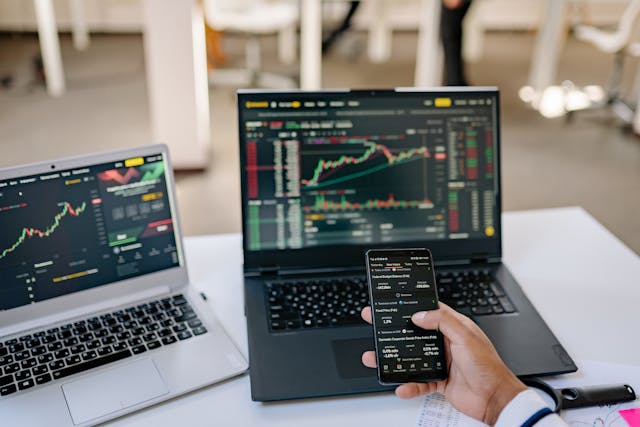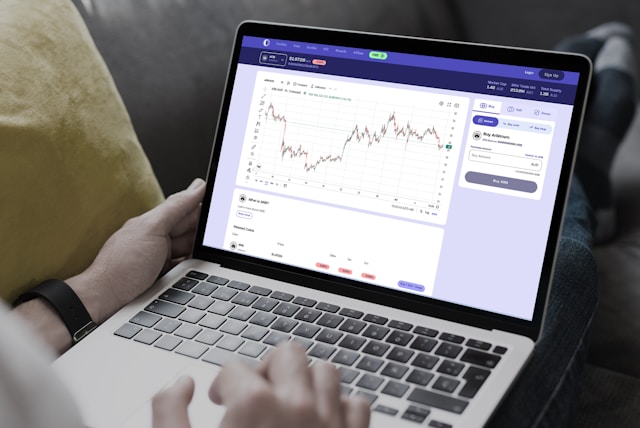Why More Traders Are Making the Move to cTrader
As the global financial landscape evolves, so too do the platforms that traders depend on. In 2025, a growing number of retail and professional traders are switching to cTrader, recognising it as a more capable and forward-thinking alternative to traditional platforms. While MetaTrader 4 (MT4) and MetaTrader 5 (MT5) have dominated the market for over a decade, many now view them as outdated in a world demanding smarter execution, deeper analytics, and stronger risk management.
Whether you are a retail trader, proprietary desk, or a firm offering forex trading and investment services, the platform you choose must do more than just execute trades. It must enhance performance, support modern strategies, and comply with ever tightening regulatory standards. cTrader has emerged as the platform of choice for traders and forex trading consultants who want institutional grade tools, greater transparency, and seamless cross device access, all without relying on third party plug ins.
This post explores why the transition to cTrader is accelerating, how it compares with MT4 and MT5, and why more traders and Forex trading and investment management professionals are making the switch in 2025.

The Evolution of Trading Platforms
MetaTrader’s Legacy: A Strong Past, but Limited Future
MT4, introduced in 2005, became a favourite among forex traders for its simplicity, wide broker support, and automated trading capabilities. MT5 followed with access to additional instruments and some technical improvements, such as depth of market and support for stocks and futures. However, both platforms rely on proprietary code (MQL4 and MQL5), lack modern interface design, and depend heavily on third party tools to extend their functionality.
In contrast, cTrader was designed from day one to meet the needs of both retail and professional traders. The platform supports advanced charting, level two market depth, native risk management tools, and seamless automation, all from a single, secure environment.
cTrader vs MT4 and MT5: A Detailed Comparison
User Experience and Charting Capabilities
cTrader offers a responsive, customisable interface with multi monitor support, detachable charts, and more than 70 preloaded indicators. Chart objects are easily editable, while timeframes include tick, range, and Renko views, all without additional software.
- MT4: Outdated layout with fixed chart settings and fewer native indicators.
- MT5: Moderate improvements in design but still limited compared to cTrader.
Verdict: Traders switching to cTrader gain access to faster workflows, better visual clarity, and more control over their workspace.
Order Execution and Market Transparency
One of cTrader’s standout features is its detailed depth of market (DOM) panel, allowing users to view the order book, liquidity levels, and volume weighted prices. Execution data, including slippage, fill times, and latency, is recorded and accessible.
- MT4: Limited execution transparency; re quotes still common.
- MT5: Includes basic DOM, but not as detailed or efficient.
Verdict: For traders and forex trading consultants managing risk and execution quality, cTrader offers a clear edge.
Advanced Orders and Risk Management
cTrader includes server side trailing stops, bracket orders, risk reward calculators, and dynamic stop losses, all built into the order window. These tools help traders plan trades with precision and control exposure in volatile markets.
- MT4: Offers basic order types and client-side trailing stops.
- MT5: Adds stop limit orders, but lacks visual risk tools.
Verdict: For professionals offering trading and investment services, cTrader reduces reliance on spreadsheets and third party risk tools.
Algorithmic Trading with cTrader Automate
cTrader Automate uses C Sharp and the .NET ecosystem, powerful and widely supported tools used in financial software development. This allows traders to code, test, optimise, and deploy automated strategies with minimal friction.
- MT4/MT5: Require MQL4 or MQL5, which are less flexible and less familiar to professional developers.
Verdict: Developers and algorithmic trading firms are increasingly switching to cTrader for its flexibility and professional grade Forex trading automation tools.
Social and Copy Trading
cTrader Copy is a native feature that enables users to allocate capital to professional traders and strategies within the same environment. Investors can analyse strategy performance in real time and manage risk based on capital allocation.
- MT4: Requires third party plug ins or integrations.
- MT5: Offers built in social trading, but lacks transparency and flexibility.
Verdict: For forex trading consultancy firms managing multiple strategies or attracting investors, cTrader offers a more streamlined solution.
Security, Compliance, and Auditability
In a market where regulatory scrutiny is increasing, cTrader offers full trade logs, real time audit trails, and timestamped modifications. These features support compliance for firms operating under strict financial regulations.
- MT4/MT5: Logs and data can be manipulated by brokers, making audits more difficult.
Verdict: For regulated brokers, fund managers, and trading and investment management professionals, cTrader offers a higher standard of data integrity.
Broker Support and Global Expansion
More brokers in Europe, Asia, and Africa are adopting cTrader in 2025 due to its open API, faster feature development, and growing demand from professional traders. Some prop trading firms now require traders to use cTrader over MT4/MT5, especially for algorithmic or high frequency strategies.
Verdict: As brokers expand their product offering, cTrader is increasingly seen as the platform that bridges retail and institutional trading.
Cloud Synchronisation and Multi-Device Access
With a single cTrader ID, users can synchronise templates, indicators, and account settings across desktop, web, and mobile devices. No file transfers or manual syncing is required.
- MT4/MT5: Require manual configuration and local file access.
Verdict: Traders working remotely or across multiple devices benefit greatly from the seamless user experience cTrader offers.
Use Case: How Forex Trading Consultants Use cTrader
Professional forex trading consultancy teams use cTrader to deliver real-time analytics, manage execution risk, and monitor portfolio drawdowns. With its open architecture, consultants can integrate proprietary dashboards, client portals, and compliance monitoring tools.
For clients, this means greater visibility, more accurate reporting, and faster adjustments based on live market data.
cTrader in 2025: The Smarter Choice for Modern Traders
In 2025, the decision to upgrade your trading platform is more than a matter of convenience, it is a strategic move that affects execution quality, client trust, and long term success. As traders demand smarter tools and regulators push for more accountability, cTrader has stepped forward as a clear leader.
By delivering unmatched transparency, a superior Forex trading environment and the flexibility required for modern forex trading and investment, cTrader offers a future proof solution for traders at all levels. Compared to MT4 and MT5, it is not just a cosmetic improvement, it is a full upgrade in performance, capability, and compliance.
Whether you are an individual trader, a technology driven investor, or a forex trading consultancy looking to offer better value to clients, switching to cTrader is one of the most meaningful steps you can take in 2025. In a competitive market, the tools you use make the difference, and cTrader is setting the standard for what a true trading platform should be.


